How To Take A Bite Of The Brood X Cicada Swarm
5:55 minutes
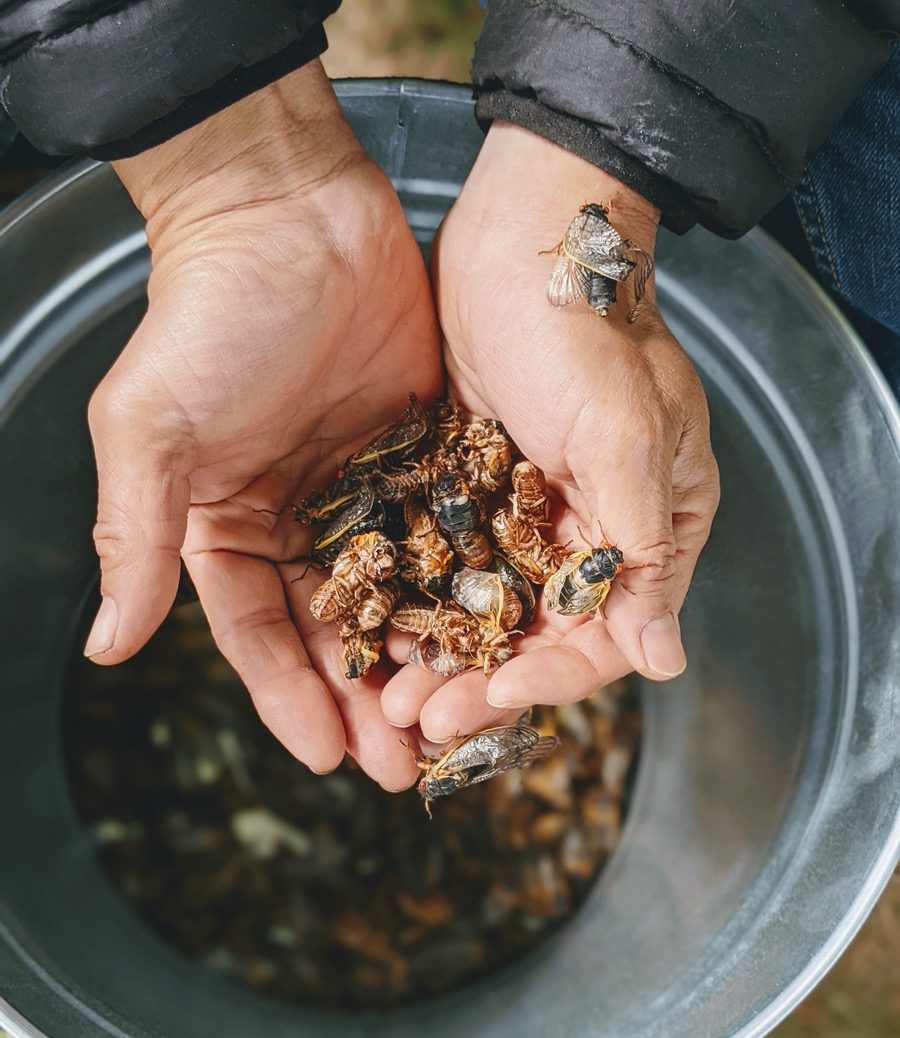
After 17 years underground, billions, maybe even trillions, of cicadas are finally emerging in a group that scientists are calling Brood X. The cicadas will mate and die all within about six weeks—filling the air with a collective hum, and leaving behind their exoskeletons.
For some this might sound like a horror movie, but for Bun Lai, chef at Miya’s Sushi in Connecticut, he sees this as an opportunity for a sustainable snack. He talks about how to hunt and cook a cicada, and how they fit in as a sustainable food source.
Check out more of Bun Lai’s cicada harvesting and dishes below!
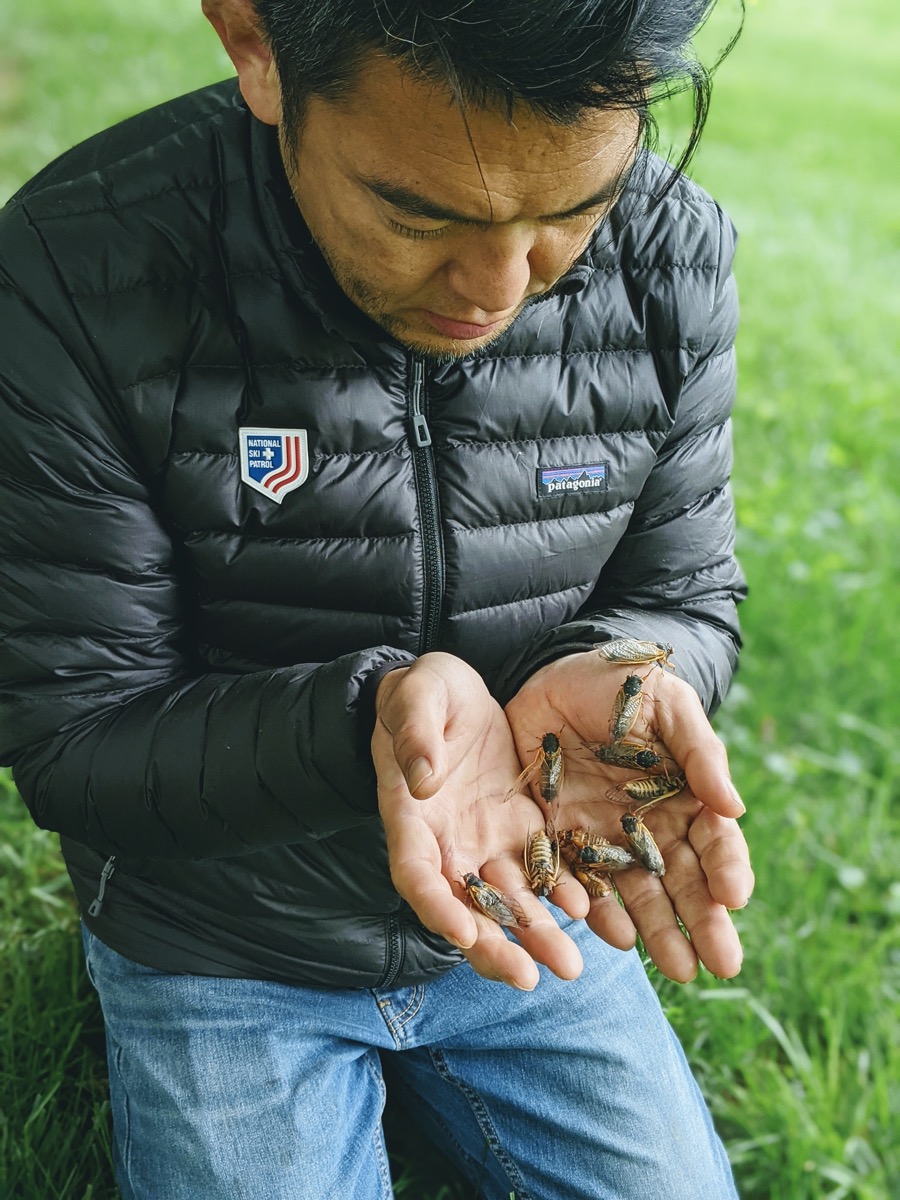
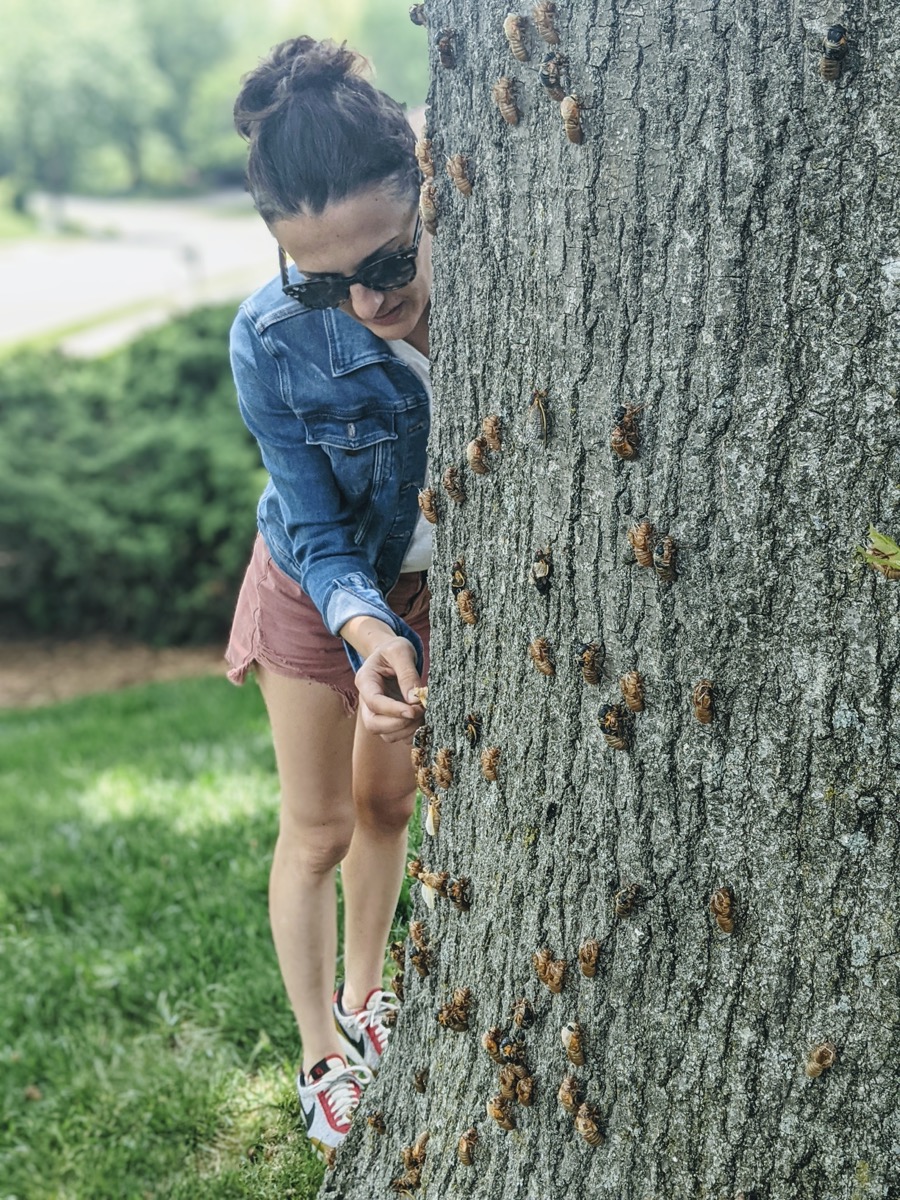
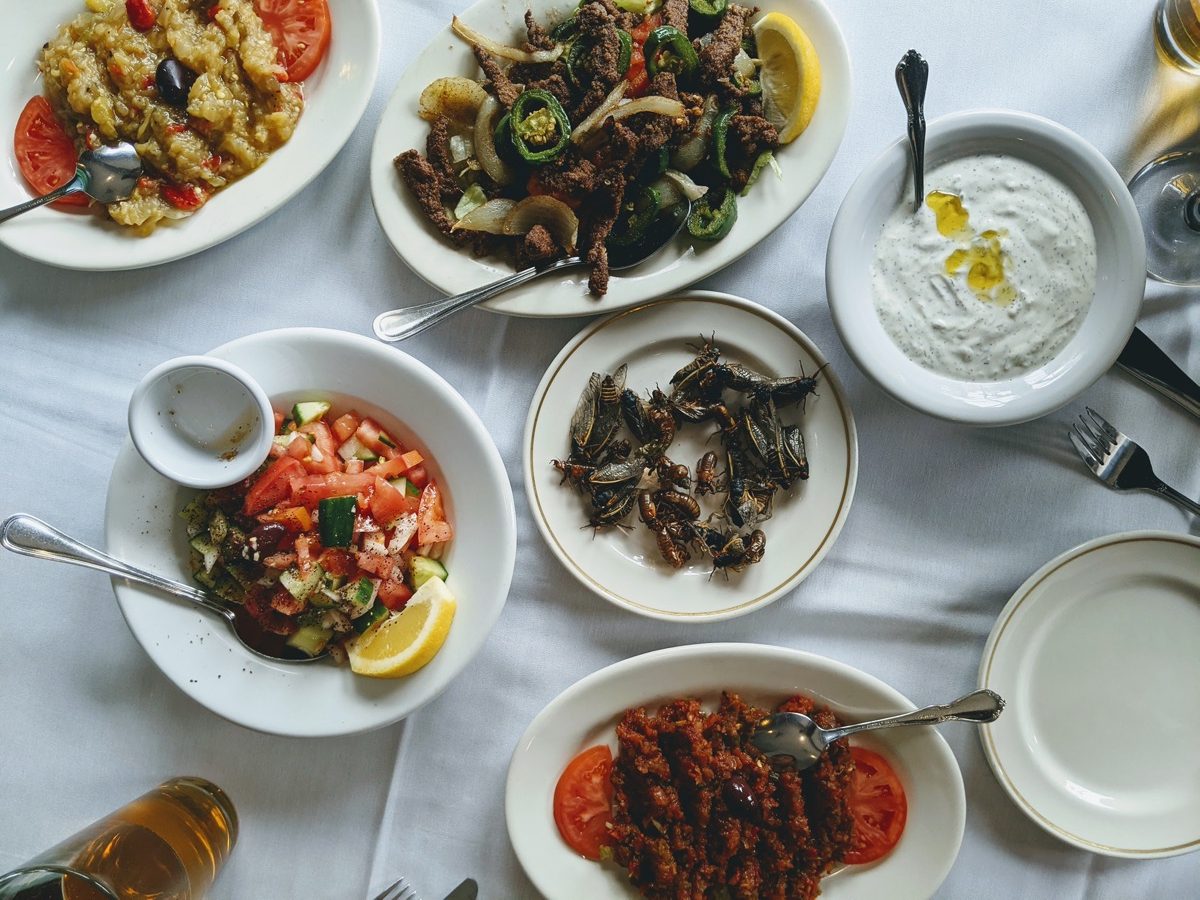
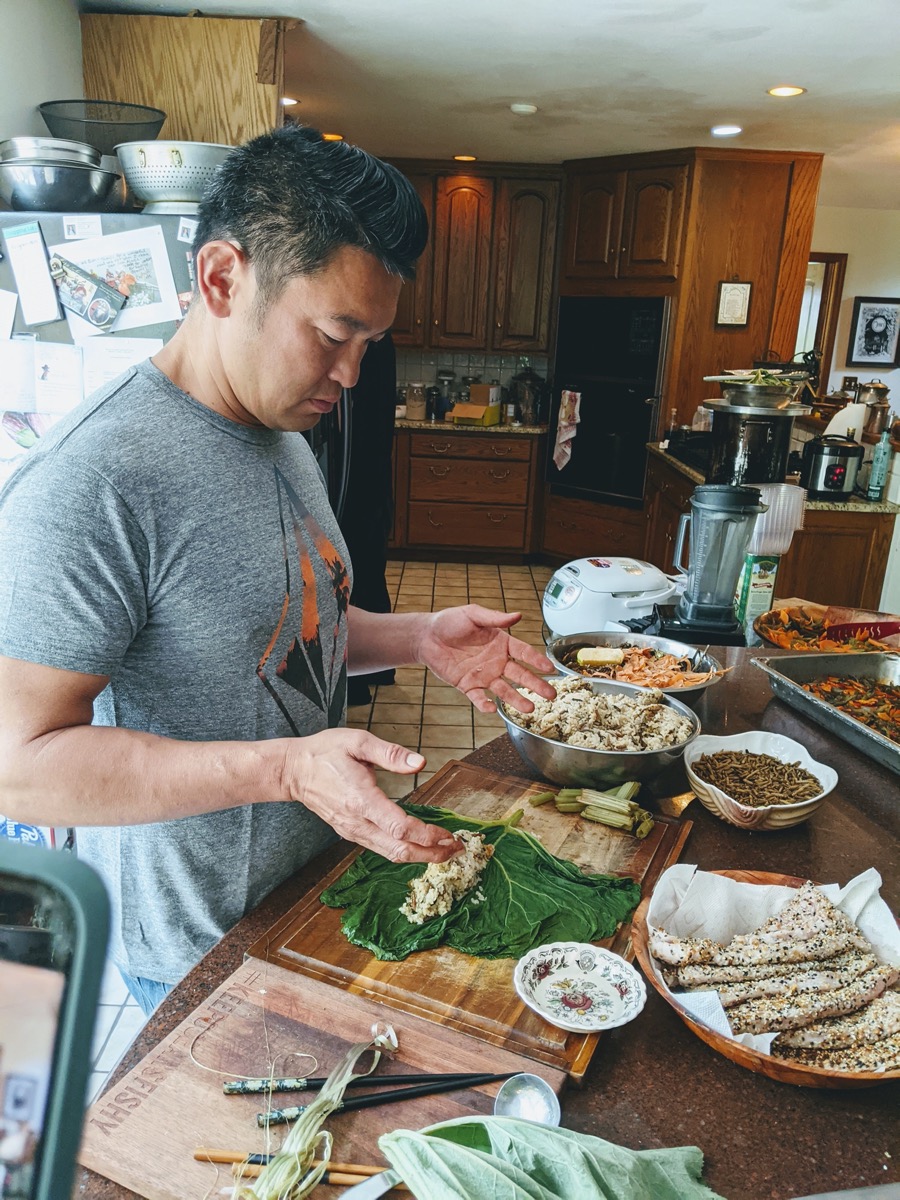
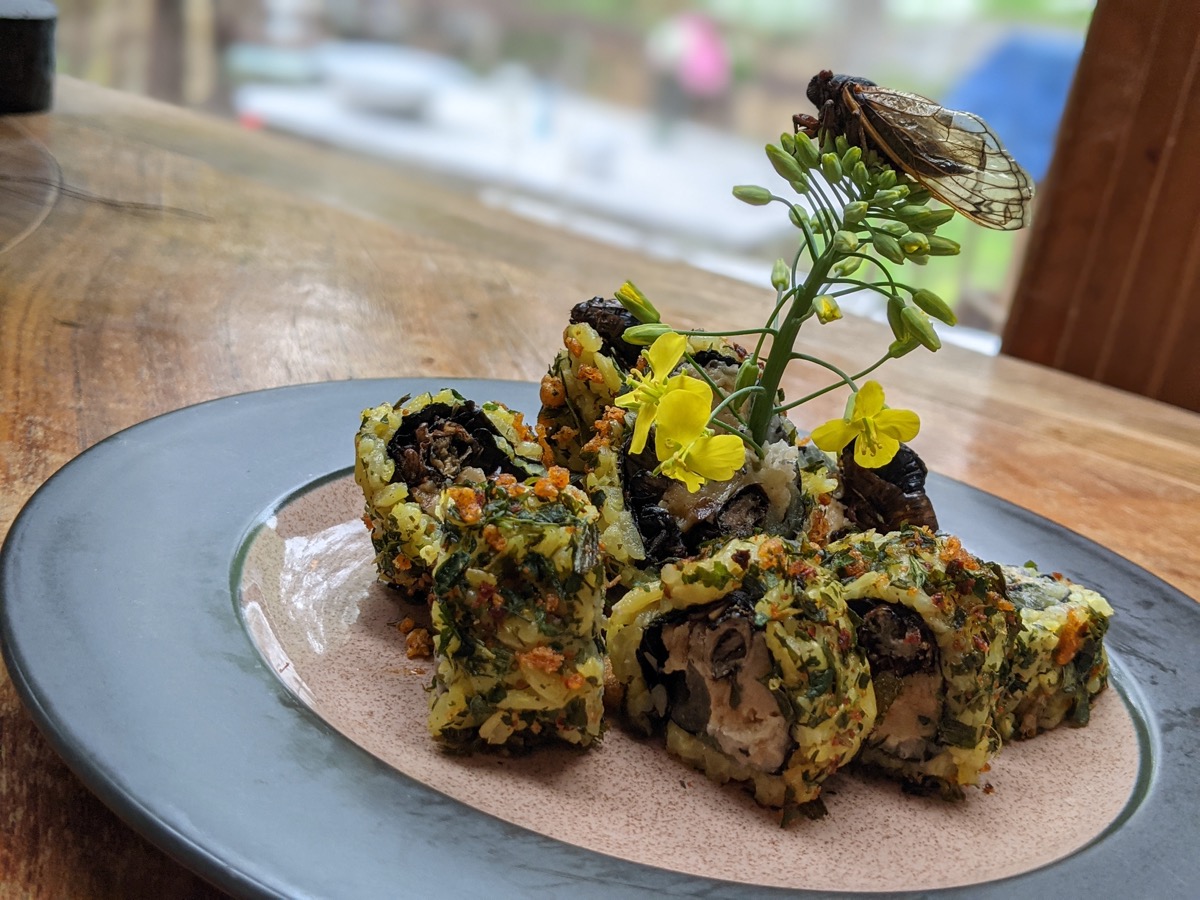
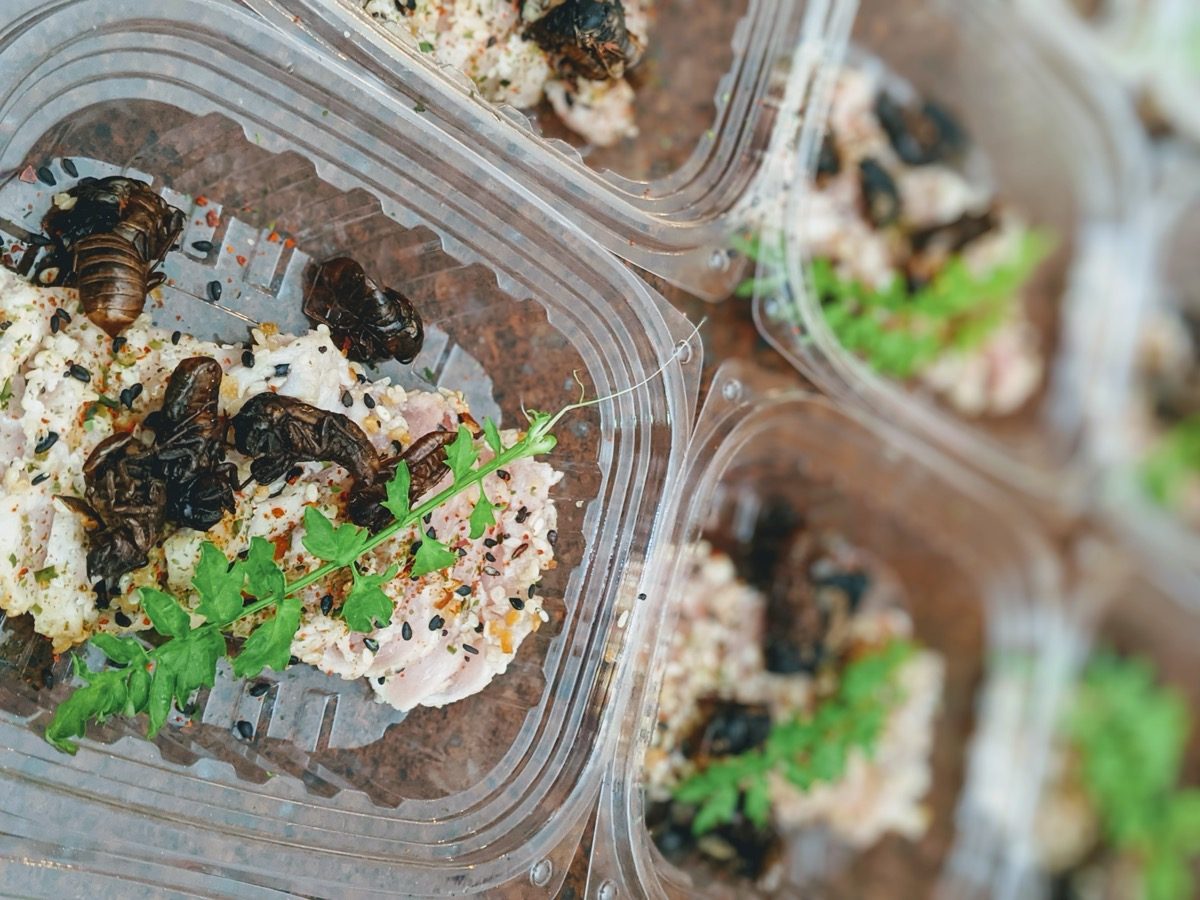
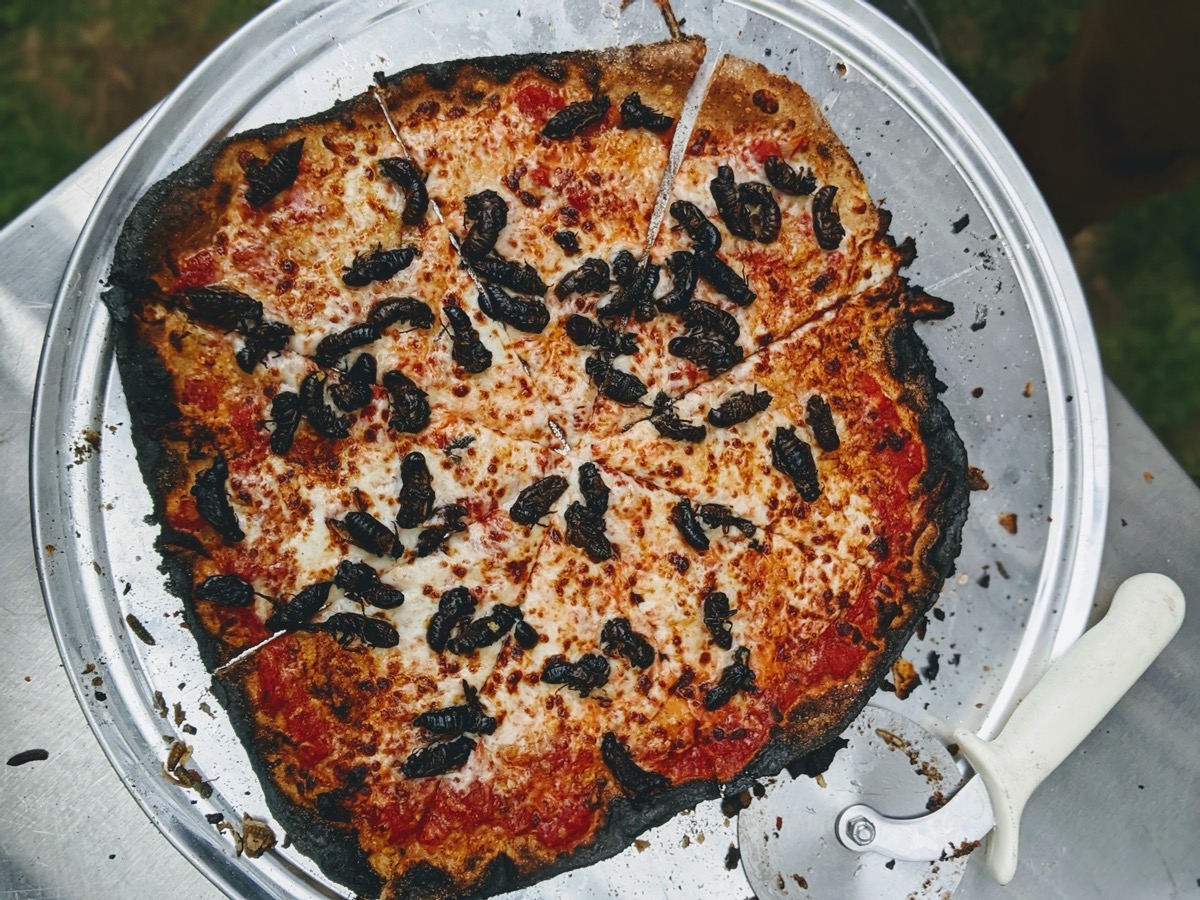
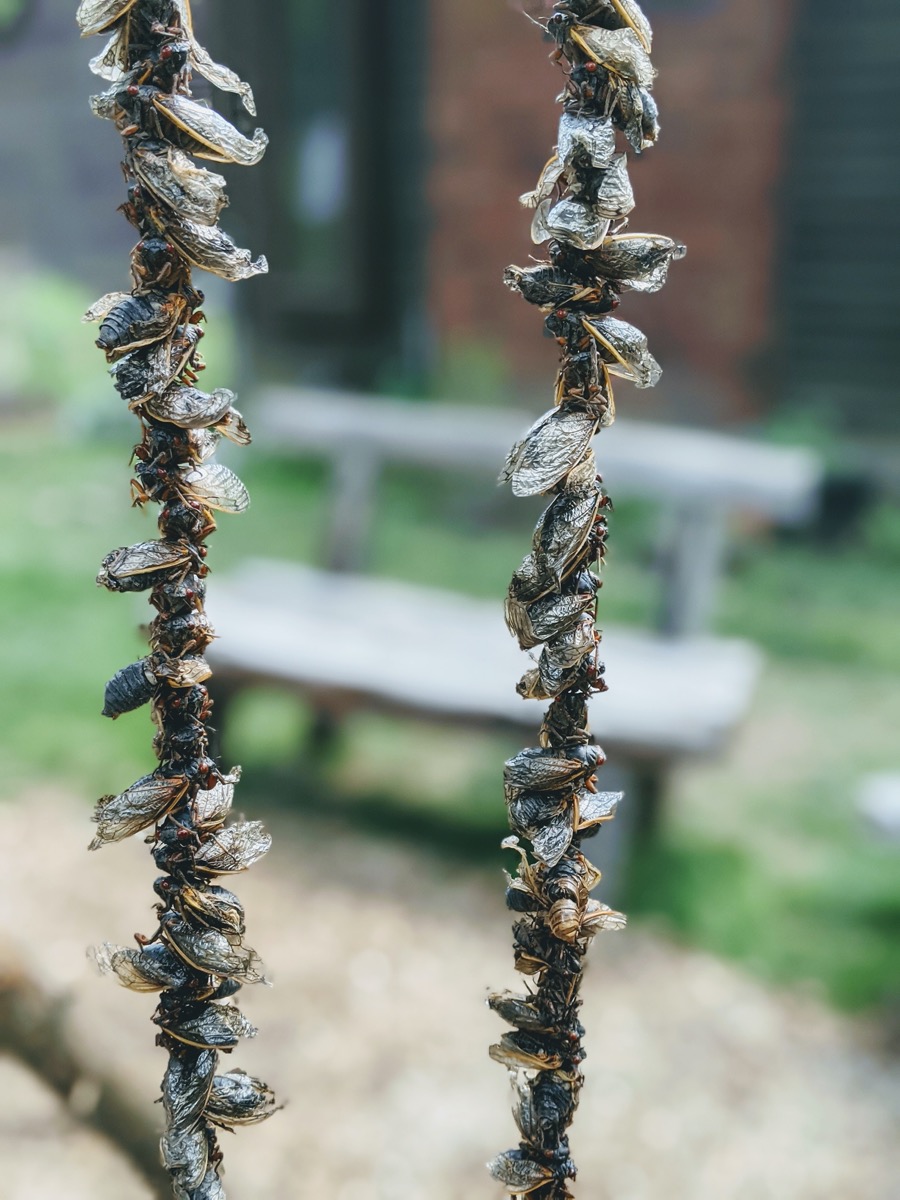
View this post on Instagram
Invest in quality science journalism by making a donation to Science Friday.
Bun Lai is a chef at Miya Sushi in New Haven and Woodbridge, Connecticut.
[INSECTS BUZZING] JOHN DANKOSKY: Hear that? That’s the sound of Brood X. After 17 years underground, billions, maybe even trillions, of cicadas are emerging in one big group only to mate, die, and to leave behind billions of tiny exoskeletons over the course of about six weeks.
To some, this might sound like a blockbuster horror movie or a story from the Bible. But for others, like my next guest, it’s a chance for a sustainable snack. Bun Lai is the chef at Miya’s Sushi in Connecticut, and he’s here to fill us in on how to hunt and prepare a cicada and how they fit in as a sustainable food source. Bun Lai, welcome to Science Friday. Thanks so much for joining us.
BUN LAI: Thank you so much for having me, John.
JOHN DANKOSKY: So you had to travel from Connecticut to Washington, DC, to be able to get some of these cicadas. Tell us a little bit more about that.
BUN LAI: I wouldn’t have to travel here if Brood X still came up in Connecticut like they used to. So cicadas are, like many animals, threatened by the destruction of habitat. It just so happens that this time, there’s just so many coming out that it really makes sense to put it on our menus now.
JOHN DANKOSKY: I mentioned that you go hunting for cicadas, but I mean, is it really hunting for cicadas? Is it hard to find them?
BUN LAI: I like to think of myself as a hunter, but it’s really a romantic vision of myself. The reality is it’s more like you’re plucking cherries off of trees.
JOHN DANKOSKY: If you’re searching for cicadas to eat, are you looking for something different? I mean, are there tastier looking cicadas than others?
BUN LAI: Actually, the younger cicadas are the tastiest, because the exoskeletons haven’t formed yet. So they’re the most succulent, and you don’t have that hard shell that gets stuck in your teeth.
JOHN DANKOSKY: Ugh. So talk about preparing cicadas. You’ve caught a bunch of them now. And you have to put together a dinner for people. What do you do with them?
BUN LAI: So in the Congo, many insects are– for example, like locusts, which is an agrarian pest that we should be eating, is prepared by boiling them in saltwater, then sauteing them in oil or lard. I think the easiest way and the tastiest way of preparing cicadas is to do the same, which is to boil them in saltwater like you would lobster, and then sauteing them in some sort of fat– I would say like a really tasty olive oil– and then just sprinkling a little salt on it.
JOHN DANKOSKY: If you want people to actually eat these things, you need to, I don’t know, make them feel like this is something that they’d want to crunch down on. So explain a little bit about the taste of a cicada.
BUN LAI: Eating a cicada is like eating a tiny little soft-shell crab. Very, very interesting, as in there’s all sorts of different layers of flavor. I always taste a little bit of popcorn. There’s that chewiness of popcorn. I taste all sorts of different types of nuts and even beans, reminiscent of flavors that we’re already very used to and familiar with.
And I think that also has to do with the fact that cicadas have been coming up out of the ground for millions of generations. It’s something that we’ve been eating for a long, long time. We just don’t remember it in our conscious mind.
JOHN DANKOSKY: I’m John Dankosky, and this is Science Friday from WNYC Studios. I’m glad you mentioned lobsters, because you’ve talked about this before. Americans are just used to eating these big, spiny creatures that come from the sea, but we find a cicada potentially repulsive. What do you think the disconnect is there for American eaters?
BUN LAI: Our food preferences are a social construct. So it wasn’t too long ago when people in the United States didn’t eat lobster, and it wasn’t this gourmet expensive food. I also think my mom was telling me how it wasn’t long ago when a lot of people didn’t like to eat sushi, or didn’t even know much about eating sushi and thought it was kind of gross to eat raw fish, and now it’s mainstream.
So I think when it comes down to eating cicadas, it’s really not that much of a leap. Their preparation is very much the same. And they taste very similar as crustaceans, too.
JOHN DANKOSKY: At your restaurant, for years and years, you’ve been doing this not just with cicadas, but with other bugs. Talk a little bit more about just the idea of sustainably eating insects in a way that the American diet hasn’t necessarily always, I don’t know, attached itself to.
BUN LAI: Our food system is very, very destructive of the environment. A fifth of the greenhouse gases that happen today come from our food system, primarily from the production of red meat. Cicadas are a gateway to the idea of eating insects.
And eating insects is really the opposite of eating beef in its impact, because you barely need to use any water. It barely creates any sort of greenhouse gases. Barely need any land at all, too. So it’s the way we’ve always been eating, but it’s also the future of food.
JOHN DANKOSKY: From before, I was asking you about how you harvest these cicadas, how you find them. You’re not digging around in the ground for them, are you?
BUN LAI: Yes, you don’t want to dig into the ground. That’s what I was going to do when I first came. And then I realized, wait a second, that’s a really great way of destroying habitat. So you wait for them, wait for nature to have them come back out of the ground again. And then you just pick them off the trees and wherever else you find them.
It’s really, really important for us to go and harvest cicadas from where the soil’s clean. So you can’t go where there are neighborhoods where there are old houses, because all the ground is going to be leaded. You really need to go into old parks in the woods where humans haven’t been.
JOHN DANKOSKY: We’ve run out of time. I’d like to thank my guest. Bun Lai is the chef at Miya’s Sushi in New Haven and Woodbridge, Connecticut. If you’d like to see photos of these cicadas and how Bun prepped them, you can visit our website at sciencefriday.com/cicadas. Bun, thanks so much.
BUN LAI: Thank you so much, John.
Copyright © 2021 Science Friday Initiative. All rights reserved. Science Friday transcripts are produced on a tight deadline by 3Play Media. Fidelity to the original aired/published audio or video file might vary, and text might be updated or amended in the future. For the authoritative record of Science Friday’s programming, please visit the original aired/published recording. For terms of use and more information, visit our policies pages at http://www.sciencefriday.com/about/policies/
Alexa Lim was a senior producer for Science Friday. Her favorite stories involve space, sound, and strange animal discoveries.
John Dankosky works with the radio team to create our weekly show, and is helping to build our State of Science Reporting Network. He’s also been a long-time guest host on Science Friday. He and his wife have three cats, thousands of bees, and a yoga studio in the sleepy Northwest hills of Connecticut.